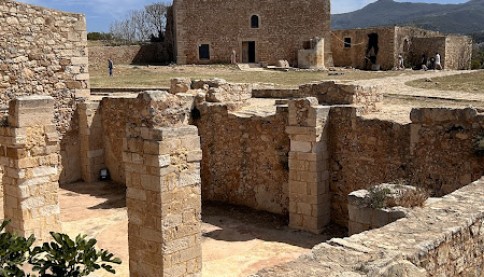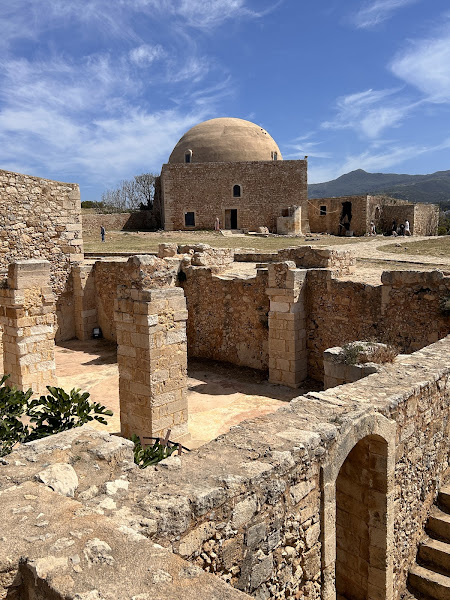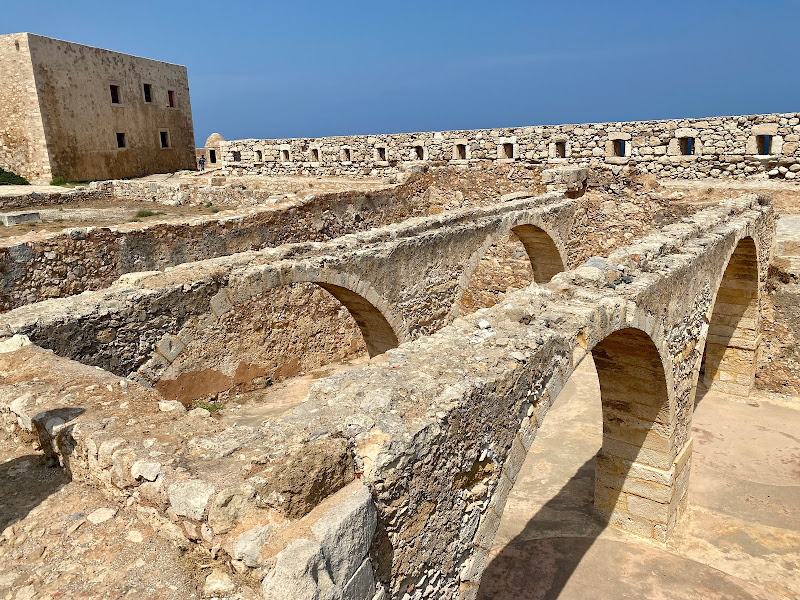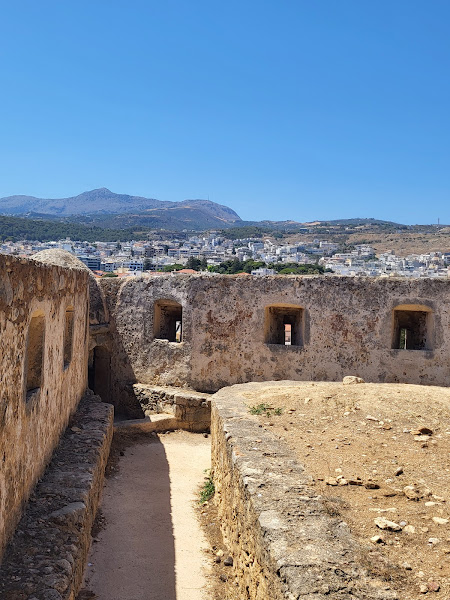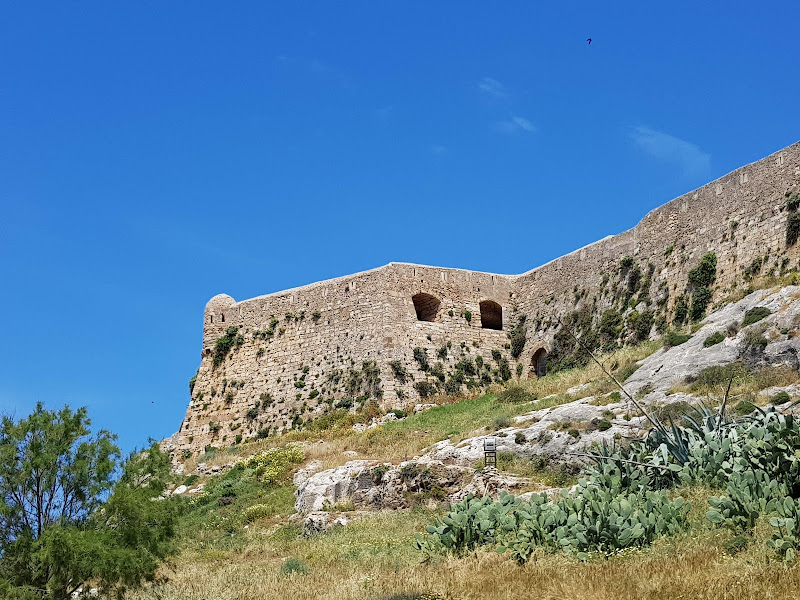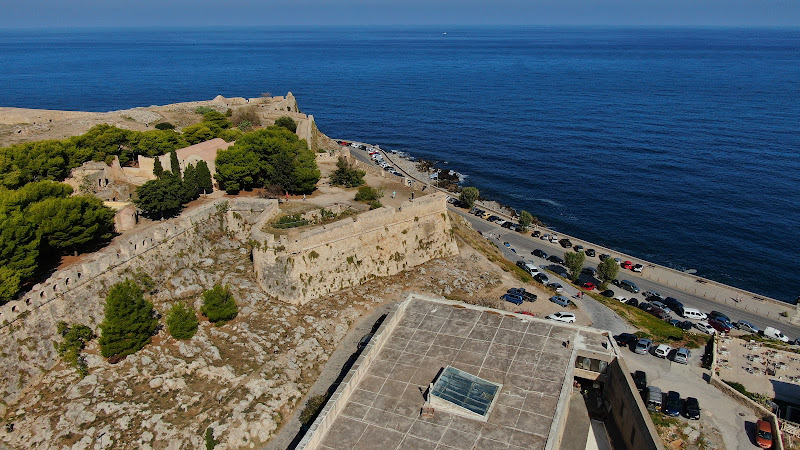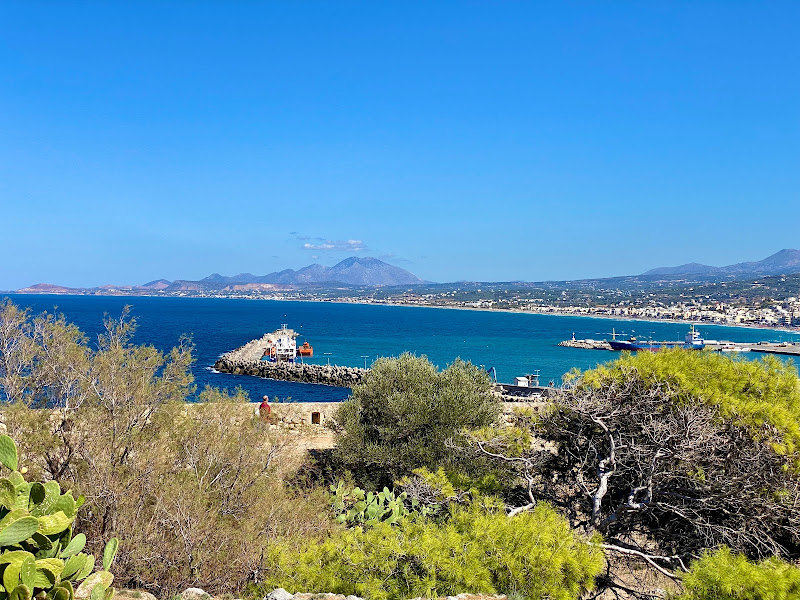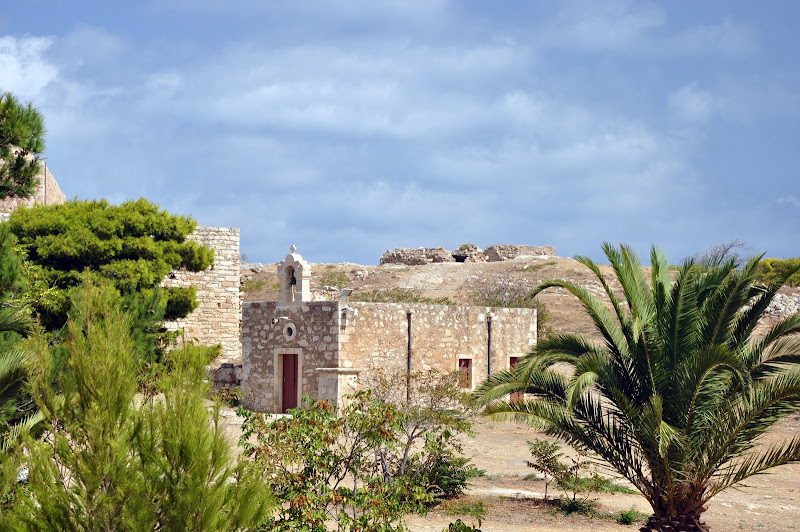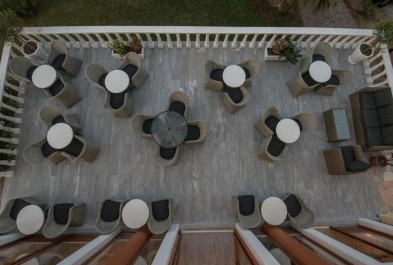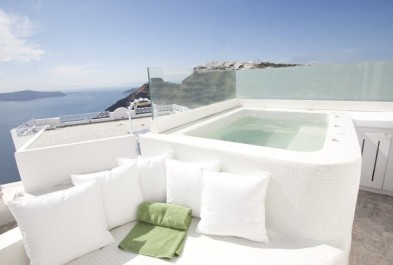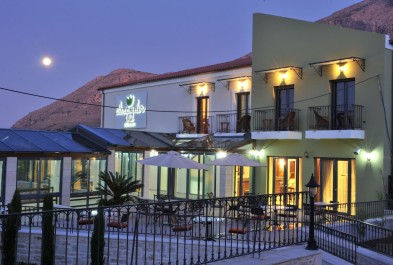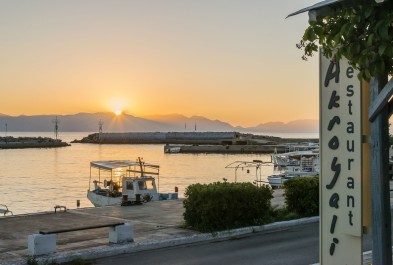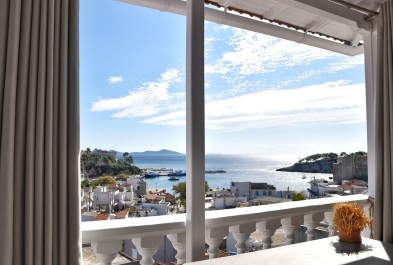Venetian Castle Fortezza #1208
- Purpose
- Excursion
- Type
- Castle
- Country
- Greece
- City
- Rethymno
- Zip code
- 741 31
Share links
Description
It is possible that the hill on which the Fortezza stands was originally an island, connected to Crete by a narrow strip of land. Over time, sediment filled in the channel, merging the hill with the mainland. The hill of Paleokastro ("Old Castle") might have been the location of the acropolis of ancient Rithymna, possibly home to the Temple of Apollo and the Sanctuary of Artemis, although this has not yet been proven.
During the Second Byzantine Period (10th-13th century), a small fortified settlement was established to the east of Paleokastro hill, which the Venetians later called Castrum Rethemi, Castel Vecchio, or Antico Castello ("Old Castle").
In the early 13th century, the Genoese pirate Enrico Pescatore, who was a rival of the Venetians and sought to claim Crete, is believed to have restored the Byzantine fortifications that surrounded the small town near the harbor. Although Castrum Rethemi was preserved after the Venetians took over the island in the 13th century, none of these original fortifications survive today.
As a maritime power, the Venetians planned to use Rethymnon as a refuge and an intermediary base between Heraklion and Chania, which led them to build a small harbor. This contributed to the growth of Rethymnon into a city, prompting the need for new fortifications.
From the first half of the 16th century onward, several factors, such as the Turkish threat and the rise of artillery with the invention and widespread use of gunpowder, led Venice to organize Crete's military defenses. This demonstrated the necessity of building the Fortezza in Rethymnon. The walls were planned according to designs by the Veronese architect Michele Sanmicheli, with construction beginning in 1540 and the walls being completed shortly before 1570.
Unfortunately, the walls of Rethymnon provided only minimal defense and proved inadequate against the attack by Turkish corsair Ulu Ali Reis, Pasha of Algiers, who attacked the city in 1571 with 40 galleys. The Venetians had abandoned the city, leaving behind only a small garrison of 100 men, who were unable to hold out for long. Ulu Ali quickly breached the defenses and razed the city.
This destruction highlighted the need for stronger fortifications. Both Venetian and Cretan authorities decided to construct a fortress capable of protecting all of Rethymnon’s residents. The Paleokastro hill was selected as the most suitable site, and construction began on the Fortezza, which became one of the largest and most comprehensive fortifications built in Crete during the Venetian era.
Indoor amenities
Route to location
Multimedia
Image gallery
Your Review
Please login or register to write your review
Reviews
No reviews found, be the first!


